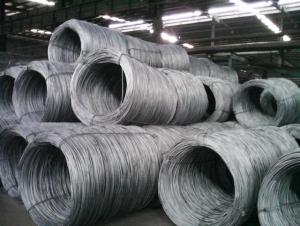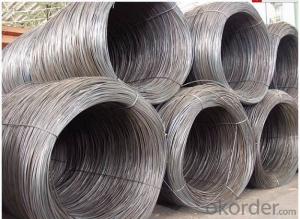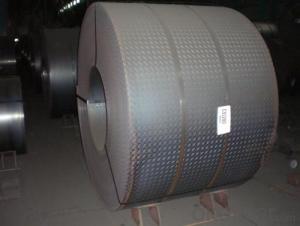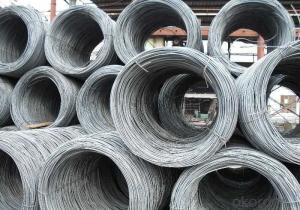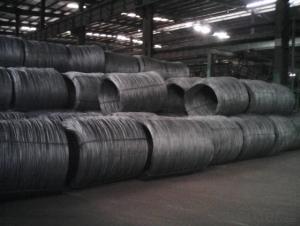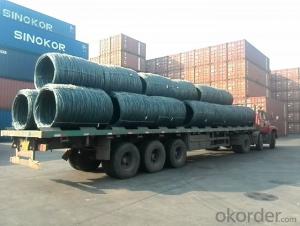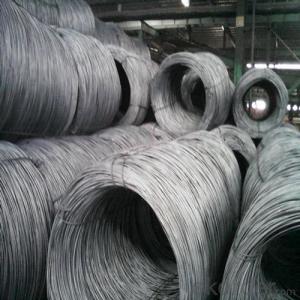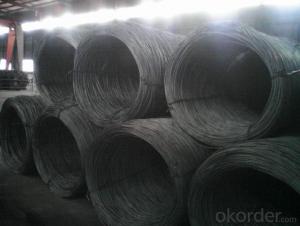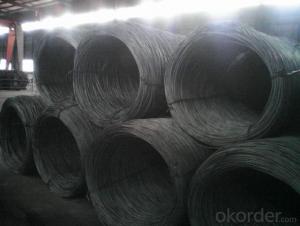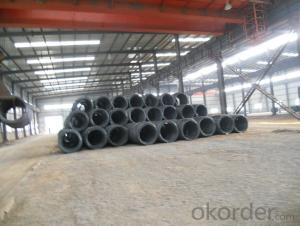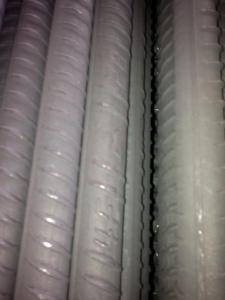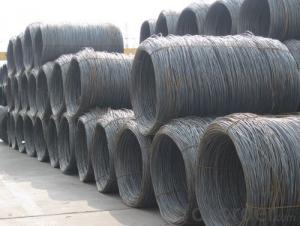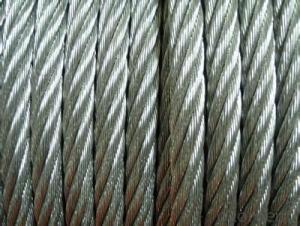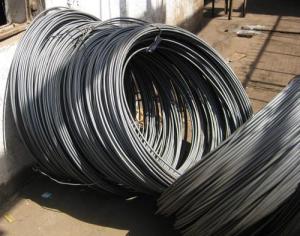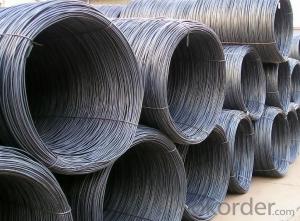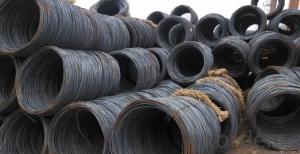Hot Rolled Steel Wire Rod SAE1008 for Making Wire and Nail
- Loading Port:
- Tianjin
- Payment Terms:
- TT or LC
- Min Order Qty:
- 25 m.t.
- Supply Capability:
- 200000 m.t./month
OKorder Service Pledge
OKorder Financial Service
You Might Also Like
Product Description:
OKorder is offering Hot Rolled Steel Wire Rod SAE1008 for Making Wire and Nail at great prices with worldwide shipping. Our supplier is a world-class manufacturer of steel, with our products utilized the world over. OKorder annually supplies products to European, North American and Asian markets. We provide quotations within 24 hours of receiving an inquiry and guarantee competitive prices.
Product Applications:
Hot Rolled Steel Wire Rod SAE1008 for Making Wire and Nail are ideal for structural applications and are widely used in the construction of buildings and bridges, and the manufacturing, petrochemical, and transportation industries.
After hot-rolled the products shaped into coil and delivery as finished product, including round, square, rectangular, hexagonal and so on. Since most of the products are round, it is generally called wire rod. Carbon steel wire rod is widely used in construction and manufacturing. Carbon steel wire rod is mainly used for reinforcement of reinforced concrete and welded structure or reprocessed (roberts , nail, etc.) materials, especially used to produce wire drawing, welding electrode, nails, spring, electronic, precise machinery parts and so on.
Product Advantages:
OKorder's Hot Rolled Steel Wire Rod SAE1008 for Making Wire and Nail are durable, strong, and resist corrosion.
Main Product Features:
· Premium quality
· Prompt delivery & seaworthy packing (30 days after receiving deposit)
· Corrosion resistance
· Can be recycled and reused
· Mill test certification
· Professional Service
· Competitive pricing
Specifications of Hot Rolled Steel Wire Rod SAE1008 for Making Wire and Nail:
Steel Grade: Q195/235, SAE1006-1018B Standard: ASTM, GB
Diameter: 5.5mm, 6.5mm, 7mm,8mm,9mm,10mm,12mm,14mm
Diameter tolerance: ±0.3mm Type: in coil, coil weight around 2MT
Technique: Hot Rolled Place of Origin: China Mainland
Surface: round, no twisted, light and smooth
Chemical Composition: (Please kindly find our chemistry of our material based on Q195、Q235A and Q235B as below for your information)
Trademark | Rank | Chemical composition (quality score) % | |||||
C | Si | Mn | S | P | |||
≤ | ≤ | ≤ | |||||
Q195 | 0.06-0.12 | 0.30 | 0.25 | 0.050 | 0.045 | ||
Q235 | A | 0.14-0.22 | 0.30 | 0.30-0.65 | 0.050 | 0.045 | |
Q235 | B | 0.12-0.20 | 0.30 | 0.30-0.70 | 0.045 | 0.045 | |
Trademark | Rank | Pulling Test | |||||
Bend PointΔs/Mpa | Tensile Strength | Elongation Ratioδ5% | |||||
Thickness (Diameter) /MM | Thickness (Diameter) /MM | ||||||
≤16 | 16-40 | ≤16 | 16-40 | ||||
≥ | ≥ | ||||||
Q195 | 195 | 185 | 315-390 | 33 | 32 | ||
Q235 | A | 235 | 225 | 375-500 | 26 | 25 | |
Q235 | B | 235 | 225 | 375-500 | 26 | 25 | |
Packaging & Delivery of Hot Rolled Steel Wire Rod SAE1008 for Making Wire and Nail:
Packaging Detail: products are packed in coil, each coil weight around 2 MT, and then shipped by container or bulk vessel
Delivery Detail: within 45 days after received deposit or LC.
Label: to be specified by customer, generally, each bundle has 1-2 labels
Trade terms: FOB, CFR, CIF
Carbon Steel Wire Rod on Port
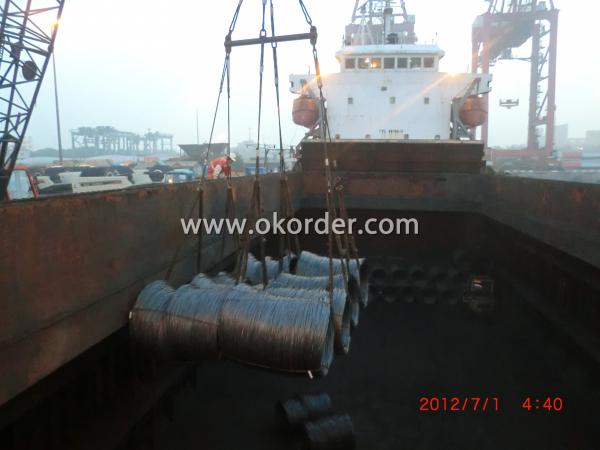
Carbon Steel Wire Rod in Container
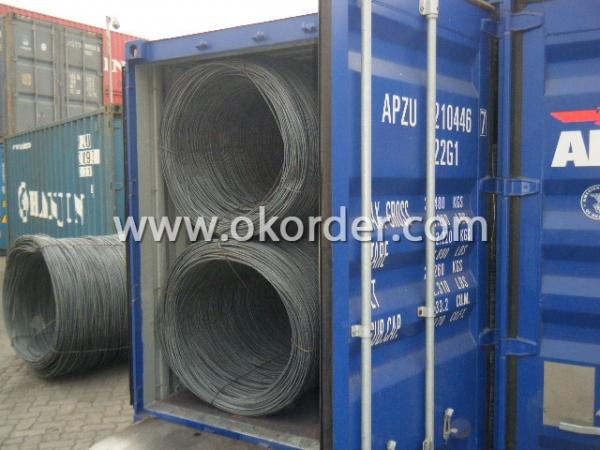
Note:
1. Our products are produced according to national standard (GB), if not, supply according to national standards (GB) or agreement as customer required.
2. Other Grade and Standard carbon steel wire rod we can supply:
Grade:H08A, 30MnSi, 62B-82B
Standard: AISI, BS, JIS, DIN
The Minimum Order Quantity of these products is high, and need to be confirmed.
3. We can not only supply carbon steel wire rod; if you need anything about building materials, please contact us.
4. Please send us your detail specifications when inquire. We will reply to you as soon as possible.We sincerely hope we can establish a long stable business relationship.
FAQ:
Q1: Can fit in the containers of Hot Rolled Steel Wire Rod SAE1008 for Making Wire and Nail?
A2: No problem, we can put them into the containers in the form sideling.
Q3: The products are invoicing on theoritical weight or on actual weight?
A3: We can do it in both manners, according to the customers' request.
Q3: What is the normal tolerance of Hot Rolled Steel Wire Rod SAE1008 for Making Wire and Nail?
A3: Normally 3%-5%, but we can also produce the goods according to the customers' requests.
- Q: What are the main factors influencing the choice of steel wire rod order warranty claims process?
- The main factors influencing the choice of steel wire rod order warranty claims process include the quality of the wire rod, the reputation and track record of the supplier, the terms and conditions of the warranty, the cost and convenience of the claims process, and the level of customer support provided by the supplier.
- Q: What are the different machinability testing methods for steel wire rod?
- There are several machinability testing methods available for steel wire rod. Some of the common methods used in industry include: 1. Turning Test: This method involves machining the steel wire rod using a lathe or turning machine. The cutting parameters such as cutting speed, feed rate, and depth of cut are varied to evaluate the machinability of the material. The tool wear, surface finish, and chip formation are observed and analyzed to assess the machinability characteristics. 2. Drilling Test: In this method, a drilling machine is used to create holes in the steel wire rod. The drilling parameters such as cutting speed, feed rate, and drill geometry are adjusted to determine the machinability. The hole quality, chip formation, and tool wear are examined to evaluate the performance of the material during drilling. 3. Tapping Test: Tapping is a common machining operation performed on steel wire rods to create threaded holes. In this test, the steel wire rod is tapped using a tapping tool. The torque required, tool life, and thread quality are assessed to determine the machinability of the material. 4. Grinding Test: Grinding is a precision machining process used to remove material from the steel wire rod. In this test, the steel wire rod is ground using a grinding wheel or abrasive belt. The grinding parameters such as grinding speed, feed rate, and grinding wheel specification are adjusted to evaluate the machinability. The surface roughness, material removal rate, and grinding wheel wear are analyzed to assess the performance of the material during grinding. 5. Hardness Test: Machinability can also be indirectly assessed by measuring the hardness of the steel wire rod. Hardness is an important mechanical property that affects the machinability of a material. Various hardness testing methods like Rockwell, Brinell, or Vickers hardness tests can be performed to determine the hardness of the steel wire rod. Higher hardness values indicate lower machinability, while lower hardness values suggest better machinability. These testing methods help manufacturers and engineers to select the most suitable machining parameters and tools for processing steel wire rods. By understanding the machinability characteristics, they can optimize the machining operations and improve productivity while minimizing tool wear and material waste.
- Q: What are the specifications for steel wire rod?
- The specifications for steel wire rod typically include the chemical composition, mechanical properties, dimensions (diameter and length), surface finish, and any additional requirements such as tolerance levels or specific certifications. These specifications are important for ensuring the quality and suitability of the steel wire rod for various applications, including construction, automotive, and manufacturing industries.
- Q: Can steel wire rod be used for welding applications?
- Indeed, welding applications can incorporate steel wire rod. As a filler material, steel wire rods are frequently employed in welding procedures. Generally composed of low carbon steel, they come in diverse sizes and grades to cater to distinct welding necessities. Steel wire rods can be put to use in various welding applications, including arc welding, MIG welding, TIG welding, and spot welding. When utilized correctly, they yield a sturdy and dependable weld. Nonetheless, it is crucial to meticulously choose the suitable wire rod, taking into account the metal type being welded and the specific welding technique employed.
- Q: How is steel wire rod tested for resistance to stress corrosion cracking?
- Steel wire rod is tested for resistance to stress corrosion cracking through various methods. One common method is the Slow Strain Rate Testing (SSRT) technique. In SSRT, a pre-cracked sample of the wire rod is subjected to a slow and controlled deformation rate, while being exposed to a corrosive environment. The test measures the time it takes for the crack to propagate under stress, allowing for the determination of the material's resistance to stress corrosion cracking. Other techniques such as electrochemical testing and hydrogen embrittlement testing can also be employed to evaluate the wire rod's susceptibility to stress corrosion cracking.
- Q: How is steel wire rod used in the production of wire mesh for automotive filters?
- Steel wire rod is crucial in making wire mesh for automotive filters. It is processed in a steel mill, where it is heated and rolled into thin wires of the same thickness. This ensures that the wire is strong and flexible, making it suitable for use in different automotive applications. Once the wire rod is turned into wires, it goes through additional processing to create the wire mesh. This involves weaving the wires together in a specific pattern using a specialized machine. The weaving process forms a mesh structure that allows air or fluids to pass through while filtering out impurities. The wire mesh made from steel wire rod is then cut and shaped to fit the specific needs of automotive filters. It is commonly used in air filters, oil filters, and fuel filters, among others. The wire mesh provides a sturdy framework that effectively captures and retains contaminants, preventing them from entering the engine or other crucial systems. Additionally, the use of steel wire rod ensures that the wire mesh can withstand corrosion, high temperatures, and mechanical stress, which are common challenges in automotive applications. This makes it an ideal choice for automotive filters, as they operate in harsh and demanding conditions. In conclusion, steel wire rod is essential for producing wire mesh for automotive filters. It serves as the raw material, offering strength, flexibility, and durability. The wire mesh, in turn, efficiently filters out impurities and protects the integrity of automotive systems.
- Q: What are the different types of steel wire rod finishes for improved corrosion resistance?
- There are several types of steel wire rod finishes that can enhance corrosion resistance, including galvanized, stainless steel, and zinc-coated finishes. Galvanized finishes involve applying a layer of zinc to the surface of the wire rod, providing a protective barrier against rust and corrosion. Stainless steel finishes are highly resistant to corrosion due to their chromium content, which forms a passive layer on the surface. Zinc-coated finishes, also known as zinc electroplating, involve applying a thin layer of zinc onto the wire rod, providing excellent corrosion resistance.
- Q: How is steel wire rod used in the manufacturing of wire mesh baskets?
- Steel wire rod is used in the manufacturing of wire mesh baskets as it serves as the primary material for creating the wire mesh. The steel wire rod is first drawn through a series of dies to reduce its diameter and increase its length, resulting in a thin, elongated wire. This wire is then woven or welded together to form the mesh structure of the basket, providing strength, durability, and a secure containment for various items.
- Q: What is the yield strength of steel wire rod?
- The yield strength of steel wire rod can vary depending on the specific grade and composition of the steel. However, in general, the yield strength of steel wire rod ranges from 300 to 600 megapascals (MPa).
- Q: How are steel wire rods used in the manufacturing of nails?
- Steel wire rods are used in the manufacturing of nails as the primary raw material. These rods are first heated and then fed into a machine that cuts them into the desired length. The cut rods are then formed into nails through a series of processes, including shaping, head formation, and point sharpening. Steel wire rods provide the necessary strength, durability, and malleability required for producing high-quality nails that can withstand various applications.
Send your message to us
Hot Rolled Steel Wire Rod SAE1008 for Making Wire and Nail
- Loading Port:
- Tianjin
- Payment Terms:
- TT or LC
- Min Order Qty:
- 25 m.t.
- Supply Capability:
- 200000 m.t./month
OKorder Service Pledge
OKorder Financial Service
Similar products
Hot products
Hot Searches
Related keywords











